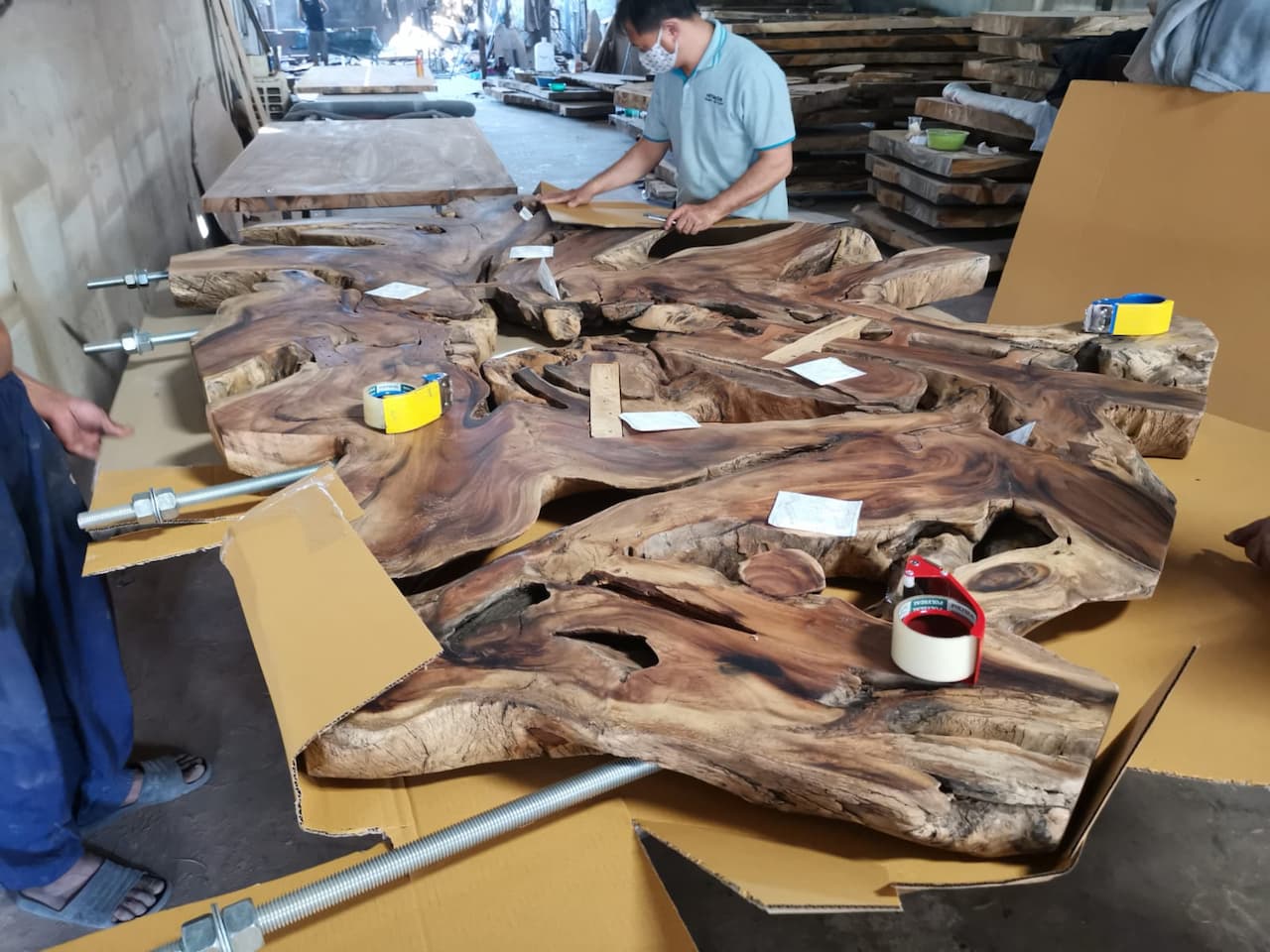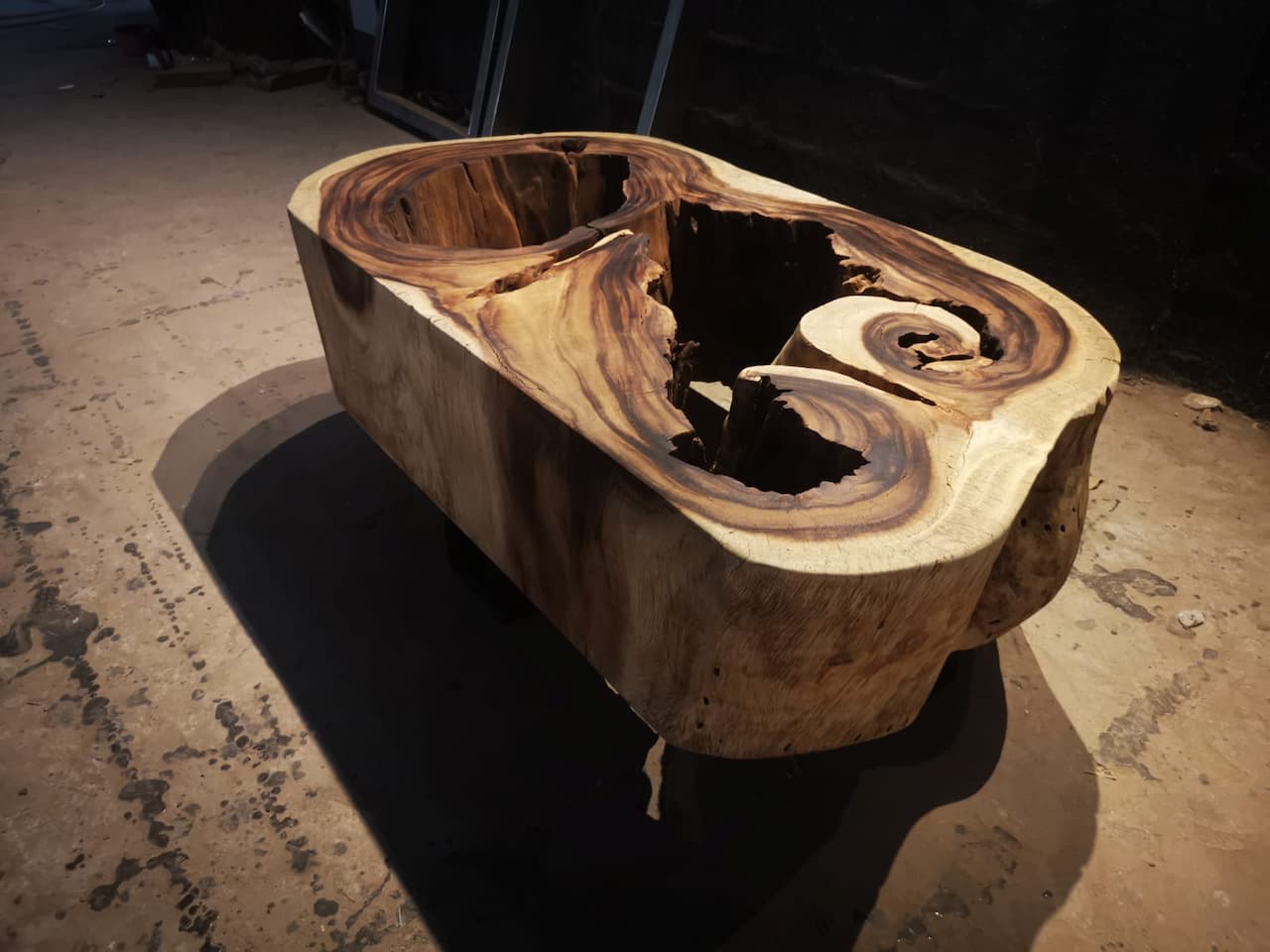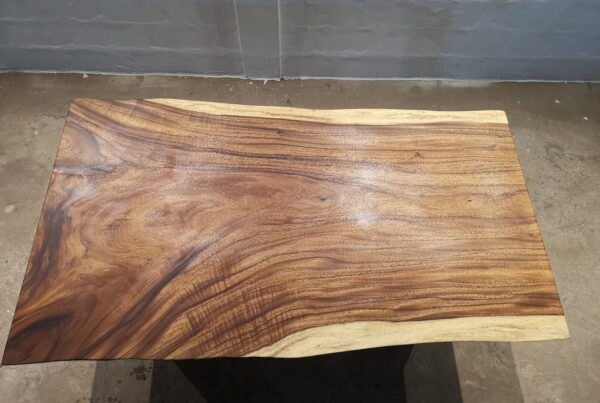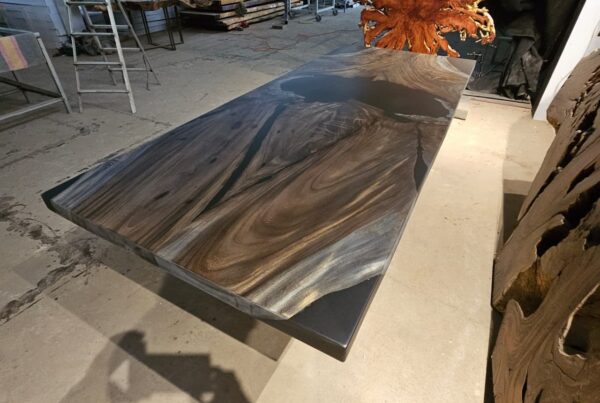Coffee tables are an essential element of any living room or office space. They not only serve as functional pieces of furniture but also add style and elegance to the overall decor. In today’s fast-paced world, where mass-produced items dominate the market, handcrafted coffee tables have emerged as a popular choice for those seeking unique and exquisite pieces that stand out from the crowd. These handcrafted coffee tables, often made from high-quality materials like acacia wood, offer a level of craftsmanship and attention to detail that is unparalleled. In this article, we will explore the world of handcrafted coffee tables that redefine elegance, with a focus on rustic and farmhouse designs.
The Appeal of Handcrafted Coffee Tables
Handcrafted coffee tables have a distinct charm that sets them apart from their mass-produced counterparts. Here are some reasons why these tables have gained immense popularity among discerning customers:
- Unique Design: Handcrafted coffee tables are meticulously designed by skilled artisans, resulting in one-of-a-kind pieces that can become the centerpiece of any room. Each table showcases the creativity and artistic vision of its maker, making it a conversation starter.
- Superior Craftsmanship: Handcrafted coffee tables are made with great attention to detail and precision. Artisans spend hours refining their skills and honing their craft to create furniture pieces that are built to last. The use of traditional woodworking techniques and hand tools ensures the highest level of quality.
- Natural Materials: Many handcrafted coffee tables are crafted from natural materials, such as acacia wood. This not only adds a touch of warmth and organic beauty to the table but also makes it more durable and long-lasting. The use of sustainable materials aligns with the growing trend of eco-friendly and ethical consumer choices.
- Customization Options: Handcrafted coffee tables often offer customization options, allowing customers to choose the size, shape, finish, and other details according to their preferences. This personalized approach ensures that the final product perfectly complements the existing decor and meets the specific requirements of the customer.
Rustic and Farmhouse Designs: A Timeless Elegance
Rustic and farmhouse-inspired designs have been gaining popularity in interior design for their timeless appeal and cozy aesthetics. Handcrafted coffee tables in rustic and farmhouse styles add a touch of warmth and character to any space. Here are some key features of these designs:
- Natural Elements: Rustic and farmhouse coffee tables often feature natural elements like distressed wood, reclaimed materials, and earthy tones. These elements create a sense of authenticity and bring the beauty of the outdoors inside.
- Simple and Functional: These designs prioritize functionality and simplicity. Clean lines, minimal ornamentation, and practical storage solutions make rustic and farmhouse coffee tables versatile and suitable for a wide range of interior styles.
- Weathered Finishes: Distressed and weathered finishes are common in rustic and farmhouse designs. These finishes not only add a sense of history and charm to the coffee table but also make it more forgiving of wear and tear.
- Mix of Materials: Rustic and farmhouse coffee tables often combine different materials, such as wood, metal, and glass, to create an interesting and visually appealing composition. This mix of materials adds depth and texture to the overall design.
Acacia Wood: A Perfect Choice for Handcrafted Coffee Tables
Acacia wood, known for its durability and natural beauty, has become a preferred choice for handcrafted coffee tables. Here are some reasons why acacia wood stands out:
- Strength and Durability: Acacia wood is known for its strength and durability, making it an excellent choice for furniture. Its dense grain structure ensures that the coffee table can withstand the test of time and daily use.
- Unique Grain Patterns: Acacia wood showcases unique and striking grain patterns, ranging from wavy to straight. This distinctive feature adds character and visual interest to the coffee table, making it a focal point in any room.
- Resistance to Moisture: Acacia wood possesses natural oils that make it resistant to moisture and warping. This quality makes it an ideal material for coffee tables, which are often subjected to spills and moisture in a living room setting.
- Sustainability: Acacia wood is considered a sustainable choice because acacia trees grow quickly and abundantly, making it an environmentally friendly option for furniture production. This aligns with the growing concern for sustainability among consumers.
Finding the Perfect Handcrafted Coffee Table
When searching for a handcrafted coffee table that redefines elegance, there are a few key factors to consider:
- Style: Determine the style that best suits your interior design aesthetic. Whether you prefer rustic, farmhouse, contemporary, or modern designs, there is a handcrafted coffee table available to match your taste.
- Size and Proportions: Consider the available space in your room and choose a coffee table that fits well without overwhelming the area. Pay attention to the height, width, and length of the table to ensure it is proportionate to your seating arrangement.
- Functionality: Evaluate your needs and lifestyle. Do you require additional storage space in the form of shelves or drawers? Would a lift-top coffee table be more convenient for working or dining? Select a coffee table that offers the functionality you desire.
- Quality and Craftsmanship: Examine the craftsmanship and attention to detail in the coffee table. Look for solid joinery, smooth finishes, and sturdy construction. High-quality handcrafted coffee tables should be built to last and withstand daily use.
- Budget: Set a budget for your coffee table purchase and explore options within that range. Handcrafted coffee tables can vary in price depending on the materials used, the complexity of the design, and the reputation of the artisan or brand.
Conclusion
Handcrafted coffee tables offer a unique blend of elegance, craftsmanship, and functionality that is hard to match. By choosing a handcrafted coffee table, you not only bring a distinctive piece of furniture into your space but also support artisans and their dedication to their craft. Whether you prefer the rustic charm of farmhouse designs or the sleekness of contemporary styles, handcrafted coffee tables provide a timeless appeal that elevates the overall ambiance of your living room or office.
Remember, investing in a handcrafted coffee table is an investment in quality, durability, and aesthetics. It is an opportunity to showcase your personal style and create a space that exudes elegance and sophistication.
Frequently Asked Questions (FAQ)
Q1: Are handcrafted coffee tables more expensive than mass-produced ones?
A1: Handcrafted coffee tables tend to be pricier due to the meticulous craftsmanship involved and the use of high-quality materials. However, the unique design and superior quality justify the investment.
Q2: Can I customize a handcrafted coffee table to fit my specific needs?
A2: Yes, many artisans and manufacturers offer customization options for handcrafted coffee tables. You can often choose the size, shape, finish, and other details to ensure it perfectly aligns with your requirements.
Q3: How do I care for and maintain a handcrafted coffee table?
A3: It’s essential to follow the care instructions provided by the artisan or manufacturer. Generally, regular dusting with a soft cloth and the use of wood-friendly cleaning products are recommended to maintain the beauty and longevity of your coffee table.
Q4: Do handcrafted coffee tables come with warranties?
A4: The warranty policies for handcrafted coffee tables may vary depending on the artisan, manufacturer, or retailer. It’s advisable to inquire about the warranty coverage before making a purchase.
Q5: Are handcrafted coffee tables eco-friendly?
A5: Handcrafted coffee tables, particularly those made from sustainable materials like acacia wood, can be considered eco-friendly. They often involve less energy-intensive production methods and support the use of renewable resources.




![The many uses and benefits of resin tables [part 2]-22](https://ltjarbor.com/wp-content/uploads/2022/01/The-many-uses-and-benefits-of-resin-tables-part-2-22-e1642739105272-600x403.jpg)

